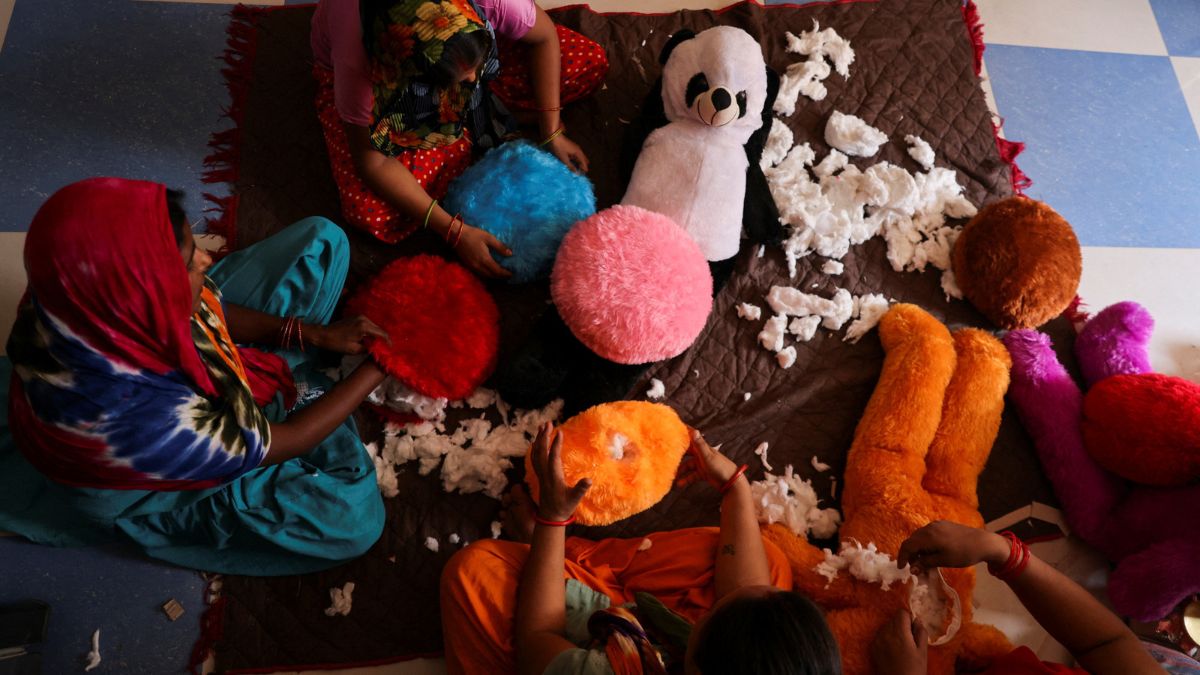Beyond ‘Lakhpati Didis’: Locating potential for women in non-farm sector

India’s employment landscape is at a defining moment. As highlighted by the 2024 Economic Survey, the country needs to generate 78.5 lakh non-farm jobs each year until 2030 to absorb its expanding labour force. This is not merely a labour market challenge—it is a call to reimagine the very basis of India’s economic strategy. For long, it is widely acknowledged that agriculture presents diminishing opportunities for real-time employment generation. This is now well recognised from the Economic Survey recommendations and becomes more critical in the current context of the global churn on tariffs.
Given the new thrust in policy emanating from Prime Minister Narendra Modi’s vision for “Women led Development”, there lies a significant opportunity to integrate women into the economic mainstream through the advancement of women-led enterprises within the overall economic strategy.
Yet, the reality today is sobering. Despite comprising nearly half the population, women contribute only 18 per cent to India’s GDP, and just 42 per cent of women aged 15 and above are part of the workforce. A vast majority of Indian women are concentrated in low-productivity, informal work or agriculture, with limited opportunity for upward mobility. In the MSME sector—that contributes nearly 30 per cent to the national GDP—only 22 per cent of enterprises are owned by women; and over 92 per cent of these women enterprises are in the informal sector with low capitalisation, operating at a subsistence level. In addition, these women-led enterprises face systemic barriers including limited access to finance, poor-quality training, inadequate support infrastructure, and minimal exposure to modern, high value markets.
At a time when India is transitioning from women’s development to women-led development, as part of its ambition to become a $5 trillion economy, creating aspirational and sustainable livelihoods for women in emerging non-farm sectors, especially entrepreneurship, is no longer just an opportunity; it is a national imperative.
Recent government initiatives, such as the plan to create two crore ‘Lakhpati Didis’, are positive signs of political intent. However, earning ₹1 lakh annually (about ₹8,000/month) may lift a household above the poverty line, but it cannot transform lives, enable long-term asset creation, or catalyse sustainable entrepreneurship. From incremental, we need a strategy to create aspirational avenues of income for women.
Towards this, a 30X30X30 strategy is proposed, which could be a game changing initiative. The strategy sets a bold, measurable, and time-bound goal to empower and enable 30 lakh women to earn ₹30,000 per month by 2030 through a well-designed, well-structured women’s entrepreneurship programme. It presents a strategic economic roadmap that seeks to integrate women as central actors in India’s growth story—not as beneficiaries but as builders, leaders, and entrepreneurs.
The 30X30X30 Strategy can be seeded as a special initiative within National Rural Livelihoods Mission (NRLM) and National Urban Livelihoods Mission (NULM), two flagship national programmes aimed at poverty reduction through providing sustainable livelihoods to women from low-income vulnerable households in rural and urban areas, respectively.
To meet the ambitious goals of the 30X30X30 strategy, targeted efforts must be made to identify high-potential non-farm sub-sectors, which can not only create new employment opportunities but also enable import substitution or boost exports.
These sectors will become the focal points for enterprise development. For each sub-sector, the strategy proposes to establish Hubs of Excellence, which are managed by women Producer Cos., modelled and incrementally adapted on the lines of the 10,000 Farmer Producer Organisation (FPO) programme. These hubs of excellence can serve as replicable models of women led entrepreneurship. Equally important is the creation of a new PO policy for the non-farm sector, specifically tailored for women.
These hubs are not to be mere training centres, but high-quality resource cum production centres. They must be end-to-end compact economic ecosystems, offering high-quality infrastructure, tools and equipment, advanced skilling, packaging and branding support, quality assurance, access to finance, and direct links to high-value markets.
Public-private partnerships must become the default, not the exception. Towards convergent strategies, the private sector must step up—not just as funders but as mentors and market-makers, guiding women-led enterprises to become globally competitive. The private sector must be engaged as mentors for each sub-sector for market-oriented approaches. Recent moves to engage industry through the apprenticeship programme show promising intent, but must now be scaled and targeted.
Earning ₹30,000–₹40,000 per month, as envisioned in the model, marks a decisive shift for women led entrepreneurship—from survival to sufficiency, from subsistence to sustainability. At this level of income, enterprises have a better chance to sustain and survive, and build resilience to adversities, besides importantly, provide employment to others. They move from being passive participants in growth to active agents of transformation.
The economic returns of such an investment are undeniable. When women earn, they invest 90 per cent of their income back into families and communities. Women demonstrate enhanced agency, stronger voice and greater decision-making as seen in improved health & well-being, education, and household resilience. Their enterprises are more likely to hire other women, creating ripple effects across villages, cities, and industries. Studies show that closing gender gaps in economic participation can boost national GDP by over 25 per cent. For India, that translates into trillions of dollars—and a more stable, just, and inclusive society.
Let us not merely imagine women at the centre of India’s growth story—let us engineer that reality. Because when women rise, India rises. And when 30 lakh women earn ₹30,000 a month by 2030, it won’t just be their families that change—it will be the future of the nation itself.
Vipin Sharma is CEO, ACCESS Development Services.
Business